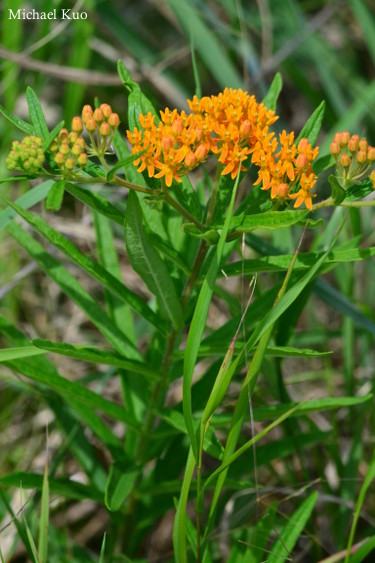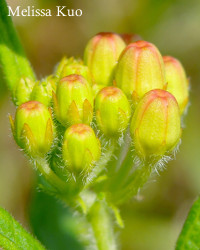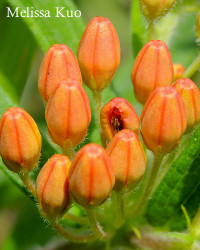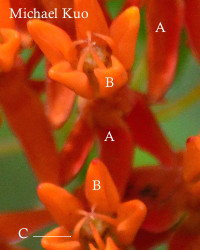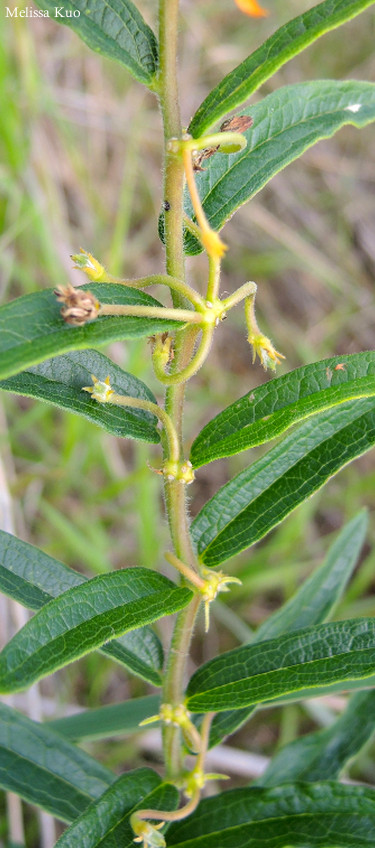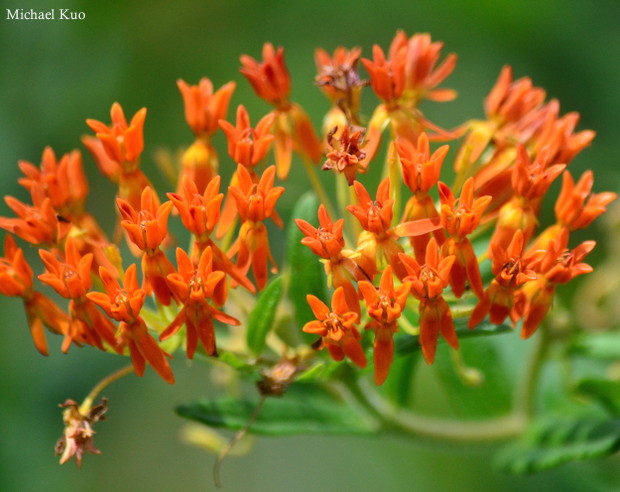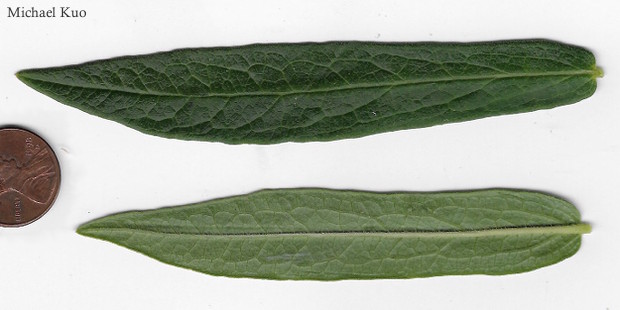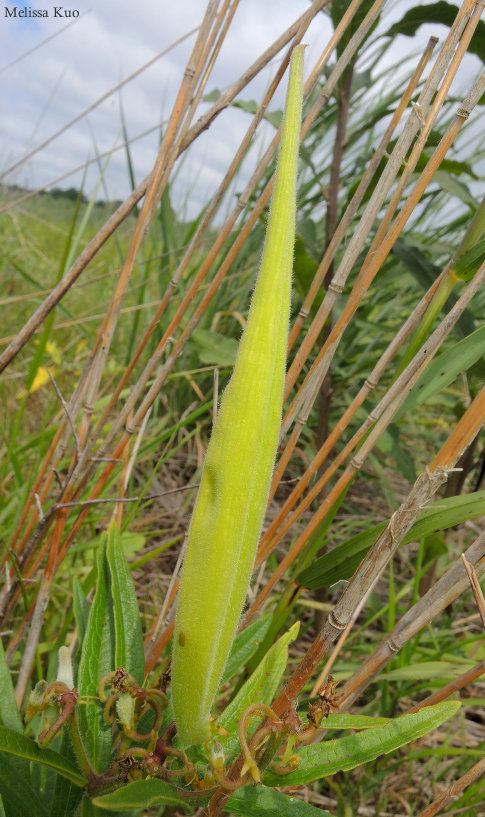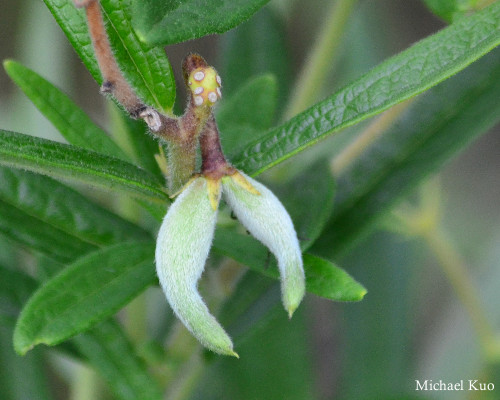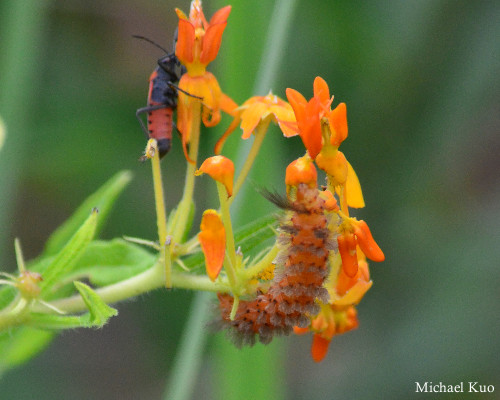
Asclepias tuberosa (butterfly weed, butterfly milkweed) |
|
|
There are some decidedly non-milkweed-ish features of Asclepias tuberosa, however, beginning with the lack of milk; broken leaves and stems do not exude a white latex. Additionally, the leaves alternate on the stem (in most milkweeds they are opposite)—and, if you were to dig up the plant (please don't) you would find a long, knobby taproot (the tuber in the scientific name tuberosa). Butterfly milkweed grows to about 2.5 feet high. Its dark green leaves are narrowly oblong, tapering to a point; they have very short petioles and are slightly fuzzy. The stem is light green and hairy, becoming reddish with age. The flower buds are initially light green with hints of orange; as the flowers open the deep orange color develops. Seed pods are long, slightly hairy, and slender.
|
|
|
|
|
|
|
|
Caterpillars of Cycnia inopinatus, the "unexpected Cycnia," are especially fond of Asclepias tuberosa foliage, and their orange colorations make them hard to see against the flowers. The adult moths, which we have not seen, are whitish. References: Jones 1971, Jones 2005, Horn 2012, Voss & Reznicek 2012, Kurz 2014, Mohlenbrock 2014, Lotts & Naberhaus 2017, Hilty 2017, USDA 2017. Kuo, Michael & Melissa Kuo (July, 2017). Asclepias tuberosa (butterfly weed, butterfly milkweed). Retrieved from the midwestnaturalist.com website: www.midwestnaturalist.com/asclepias_tuberosa.html All text and images © , midwestnaturalist.com. |
